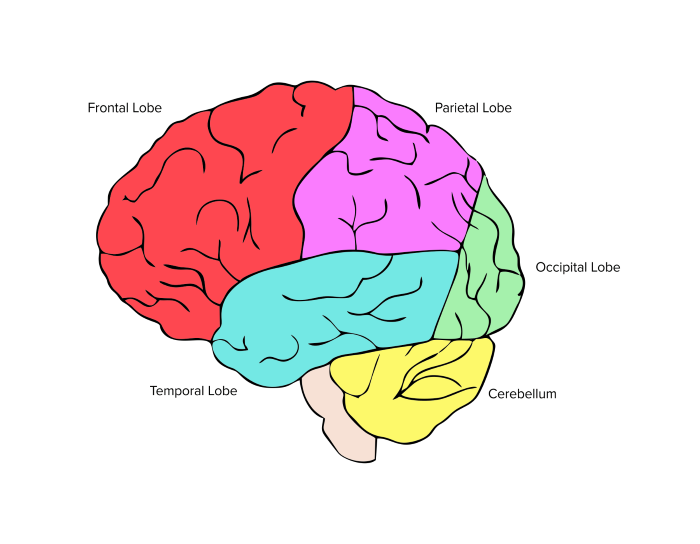Nervous System for the DAT
/Learn key DAT concepts related to divisions of the nervous system, neuronal anatomy, types of neurons, and sensations, plus practice questions and answers
Table of Contents
Part 1: Introduction to the nervous system
Part 2: Divisions of the nervous system
a) Central and peripheral nervous systems
b) Autonomic and somatic nervous systems
c) Sympathetic and parasympathetic nervous systems
Part 3: Microanatomy
a) Anatomy of a neuron
b) Cells of the nervous system
c) The action potential
d) Neural impulses and neurotransmitters
Part 4: Types of Neurons
a) Afferent and efferent neurons
b) Upper and lower motor neurons
Part 5: Sensation
a) Visual sensation
b) Auditory sensation
c) Physical sensation
d) Chemical sensation
Part 6: High-yield terms
Part 7: Questions and Answers
----
Part 1: Introduction to the nervous system
The complexity of the nervous system enables us to perceive the world around us and treasure life's most precious memories. However, amidst this wonder, there's a concerning trend: neurological disorders are becoming increasingly prevalent. Research suggests that conditions like Alzheimer’s disease may triple in occurrence by 2050. This underscores the urgency for future healthcare professionals to be well-versed in addressing the needs of these patients.
This guide delves into crucial facets of the nervous system relevant to the DAT. Throughout this resource, you'll encounter key terms highlighted in bold. Familiarizing yourself with these concepts is crucial! Additionally, at the guide's conclusion, you'll find DAT-style practice problems designed to gauge your understanding.
----
Part 2: Divisions of the nervous system
The nervous system fulfills a multitude of functions, primarily serving as the orchestrator of control among diverse body systems. Its pivotal role involves integrating information from various body systems, incorporating external environmental cues into the body's functions, and coordinating responses. These actions aim to sustain internal equilibrium and ensure optimal cellular function.
FIGURE 1: DIVISIONS OF THE NERVOUS SYSTEM
a) Central and peripheral nervous systems
The nervous system is divided into two major components: the central nervous system (CNS) and the peripheral nervous system (PNS). The central nervous system consists of the brain and spinal cord, which manage information processing and coordination with the peripheral nervous system. Nerves and ganglia outside of these core structures make up the peripheral nervous system and govern muscle movement and sensation.
The communication between both nervous systems occurs through the efferent and afferent nerves of the peripheral nervous system. Afferent nerves, ascending the spinal cord, relay sensory data from the environment to the brain. On the other hand, efferent nerves descend from the brain through the spinal cord and transmit commands to our muscles. Consider this mnemonic to help you remember these nerves: afferent nerves "arrive" at the brain, while efferent nerves "exit."
In the spinal cord, afferent and efferent fibers typically occupy distinct regions. The dorsal roots, facing the back, contain bundles of afferent (sensory) fibers. The ventral roots, facing the belly, contain bundles of efferent (motor) fibers.
The brain is roughly divided into three primary regions: 1) the hindbrain, 2) midbrain, and 3) forebrain. In humans, the brainstem is a combination of midbrain and hindbrain regions. The roles performed by these brain areas align with their evolutionary ages: the ancient hindbrain manages fundamental survival functions like breathing, while the more recent forebrain handles complex tasks such as language interpretation. Consequently, although individuals can generally survive without a forebrain, they wouldn't survive without a midbrain or hindbrain.
| Substructure | Derived from | Main Functions |
|---|---|---|
At the forefront of the brain lies the cerebral cortex, a crucial region overseeing numerous higher cognitive functions. This cortex is abundant in neuron cell bodies, known as soma, which extend their long axons throughout the brain and into the spinal cord.
The cerebral cortex exhibits four primary lobes, each loosely dedicated to specialized functions:
The frontal lobe manages executive function, voluntary motor movement initiation, and speech production.
The parietal lobe handles spatial processing, proprioception, and somatosensation.
The occipital lobe governs visual processing.
The temporal lobe oversees learning, memory, speech perception, and auditory senses. It also includes the pivotal Wernicke’s area responsible for language comprehension.
FIGURE 2: LOBES OF THE CEREBRAL CORTEX
Both hemispheres of the brain possess their own loose specialization. The left hemisphere processes sensory inputs from the right side of the body and primarily engages in mathematical problem-solving, logical reasoning, and analytical thinking. Conversely, the right hemisphere processes sensory inputs from the left side of the body and is primarily involved in spatial awareness, emotional intelligence, intuition, and holistic thinking.
Communication between these hemispheres occurs via the corpus callosum, a nerve tract that connects the left and right brain hemispheres. This structure's nerves facilitate the transfer of sensory information from one hemisphere to the other for processing. Hence, environmental cues sensed by the right body side are relayed to the left brain hemisphere for interpretation, and vice versa.
----




